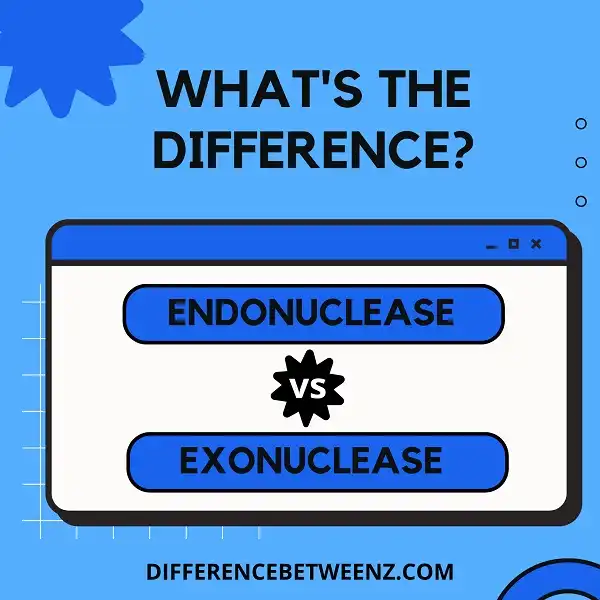There are many enzymes in the world, but two of the more common ones are endonucleases and exonucleases. Both types of enzyme have different purposes and work differently in the body. It is important to know the difference between these two types of enzyme so you can understand how they work and what they do. This blog post will discuss the basics of each type of enzyme.
What is Endonuclease?
Endonucleases are enzymes that cleave DNA at or near the site of internal base lesions. Endonucleases can be broadly classified into two groups: those that nick DNA and those that cleave it. For example, Escherichia coli endonuclease IV nicks one strand of DNA at specific sites, while bacteriophage T4 endonuclease cleaves both strands of DNA at a site bp upstream from its recognition sequence.
- Endonucleases play an important role in the repair of spontaneous damage to DNA, such as depurination and deamination, as well as in the removal of damaged bases incorporated during replication.
- Endonucleases are also involved in site-specific recombination, transposition, and other aspects of genome rearrangement. In addition to their roles in DNA metabolism, some endonucleases have been adapted for use as molecular tools for analyzing and manipulating DNA.
- For example, restriction endonucleases are commonly used to digest DNA for gel electrophoresis or to generate defined fragments for use in molecular cloning. Endonucleases have also been used to cleave specific sequences in vivo for mapping or mutagenesis studies. Endonucleases thus play a vital role in both the maintenance of genomic integrity and the manipulation of genetic information.
What is Exonuclease?
Exonucleases are enzymes that catalyze the hydrolysis of phosphodiester linkages in DNA or RNA, beginning from the end of a nucleic acid chain. Exonucleases can be divided into two groups based on their direction of cleavage: 5′-3′ exonucleases cleave nucleic acids from the 5′-end to the 3′-end, while 3′-5′ exonucleases cleave nucleic acids from the 3′-end to the 5′-end. Exonucleases are found in all domains of life, and play important roles in many biological processes such as DNA replication, repair, and recombination. In addition, exonucleases are frequently used in biotechnology and molecular biology applications such as DNA sequencing and PCR.
Difference between Endonuclease and Exonuclease
- Endonucleases are enzymes that cleave DNA at or near the interior of the molecule, while exonucleases cleave DNA from the end of the molecule. Endonucleases generally require a specific sequence of nucleotides in order to cleave the DNA, while exonucleases do not require a specific sequence.
- Endonucleases are classified according to the type of bond that they cleave: phosphodiester bonds, RNA-DNA hybrids, or DNA-DNA interactions. Exonucleases are classified according to the type of bond that they cleave: phosphate, 3’OH, or 5’OH. Endonucleases can be further divided into two groups: those that make staggered cuts and those that make blunt cuts.
- Staggered cuts result in sticky ends, while blunt cuts result in blunt ends. Exonucleases can be further divided into two groups: those that degrade DNA from the 3’ end and those that degrade DNA from the 5’ end. 3’ exonucleases degrade DNA from the 3’ end while 5’ exonucleases degrade DNA from the 5’ end. Endo- and exonucleases are important enzymes in many different biochemical processes, such as DNA replication, recombination, and repair.
Conclusion
Endonucleases and exonucleases are enzymes that catalyze the hydrolysis of phosphodiester bonds in DNA or RNA. The main difference between these two types of enzymes is their specificity for the nucleotides at the 3′ or 5′ end of a polynucleotide strand. Endonucleases cleave phosphodiester bonds within a nucleic acid molecule, whereas exonucleases remove nucleotides from the ends of a polynucleotide strand. This distinction is important because it determines where nuclease activity occurs during replication and transcription.


